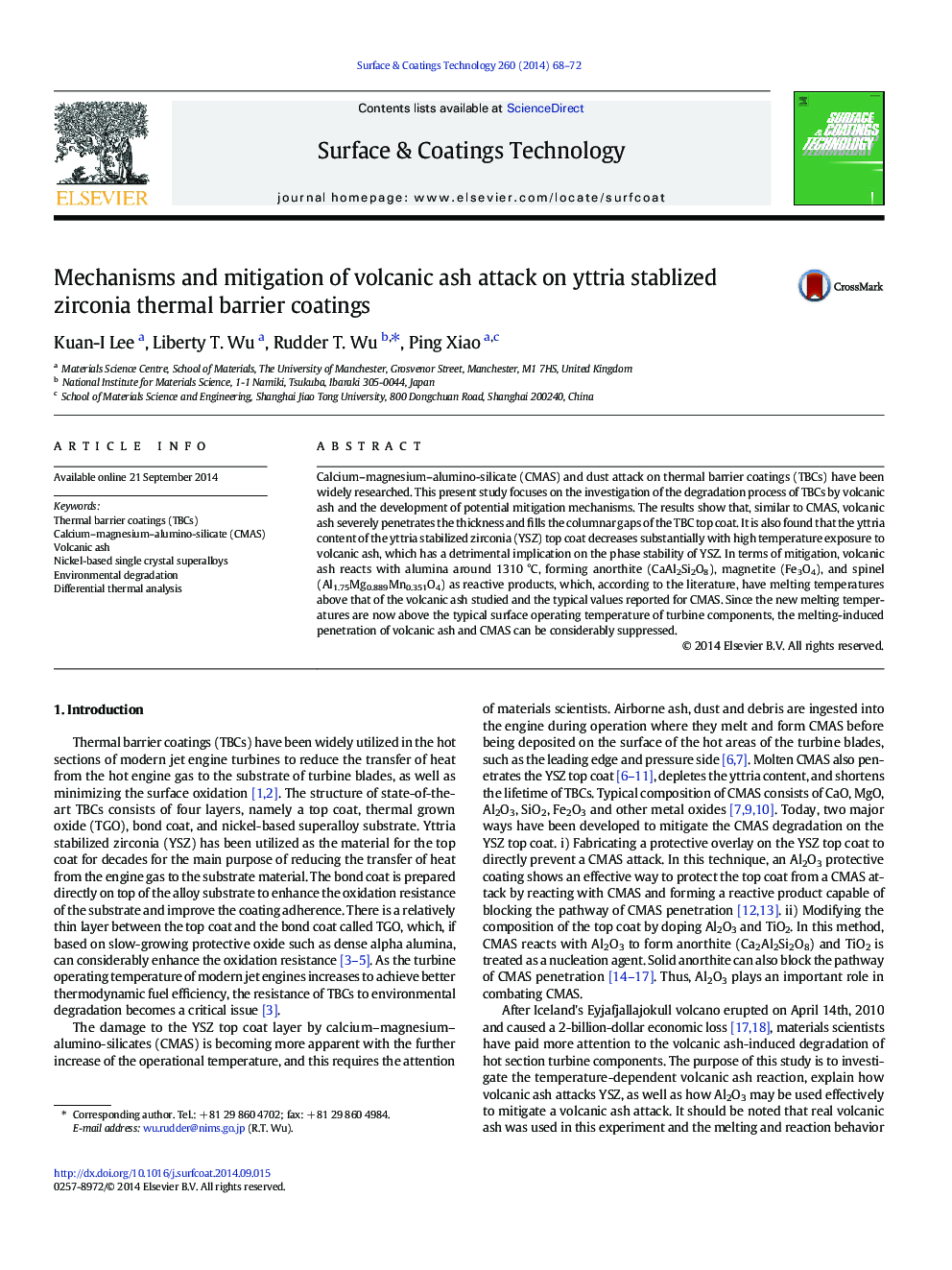| Article ID | Journal | Published Year | Pages | File Type |
|---|---|---|---|---|
| 8026877 | Surface and Coatings Technology | 2014 | 5 Pages |
Abstract
Calcium-magnesium-alumino-silicate (CMAS) and dust attack on thermal barrier coatings (TBCs) have been widely researched. This present study focuses on the investigation of the degradation process of TBCs by volcanic ash and the development of potential mitigation mechanisms. The results show that, similar to CMAS, volcanic ash severely penetrates the thickness and fills the columnar gaps of the TBC top coat. It is also found that the yttria content of the yttria stabilized zirconia (YSZ) top coat decreases substantially with high temperature exposure to volcanic ash, which has a detrimental implication on the phase stability of YSZ. In terms of mitigation, volcanic ash reacts with alumina around 1310 °C, forming anorthite (CaAl2Si2O8), magnetite (Fe3O4), and spinel (Al1.75Mg0.889Mn0.351O4) as reactive products, which, according to the literature, have melting temperatures above that of the volcanic ash studied and the typical values reported for CMAS. Since the new melting temperatures are now above the typical surface operating temperature of turbine components, the melting-induced penetration of volcanic ash and CMAS can be considerably suppressed.
Keywords
Related Topics
Physical Sciences and Engineering
Materials Science
Nanotechnology
Authors
Kuan-I Lee, Liberty T. Wu, Rudder T. Wu, Ping Xiao,
